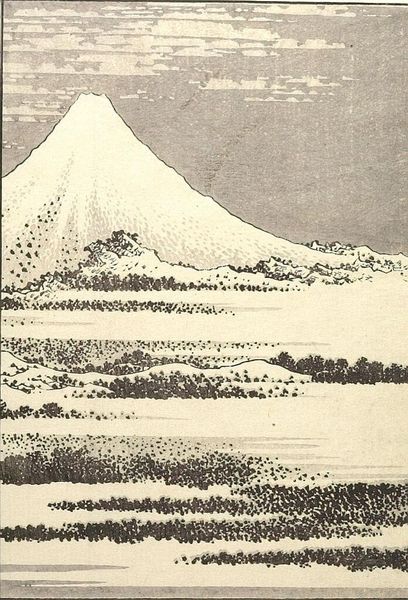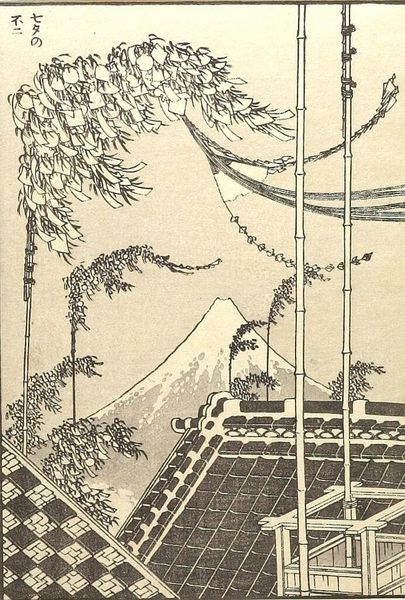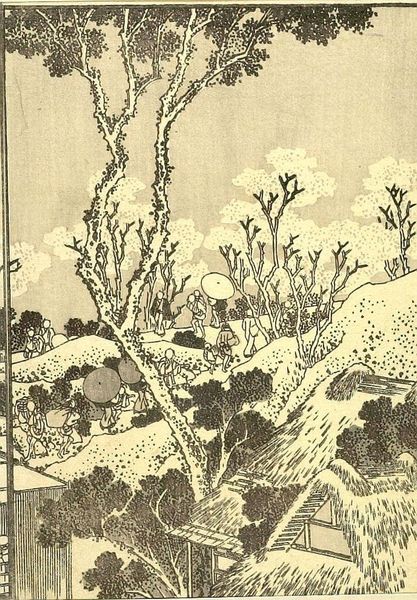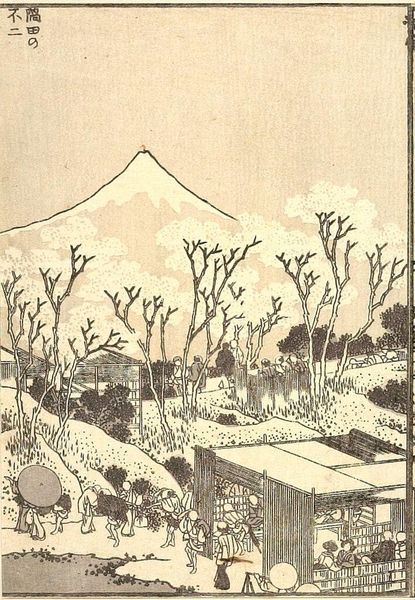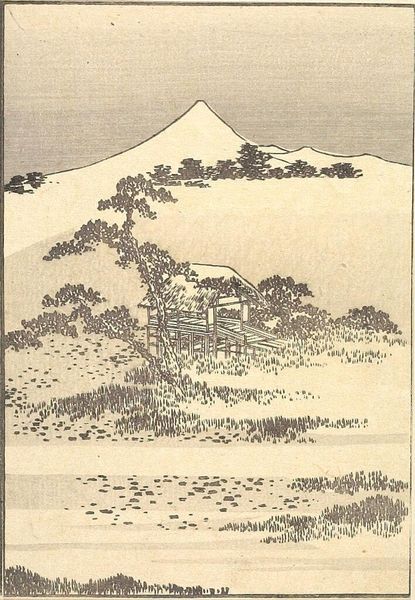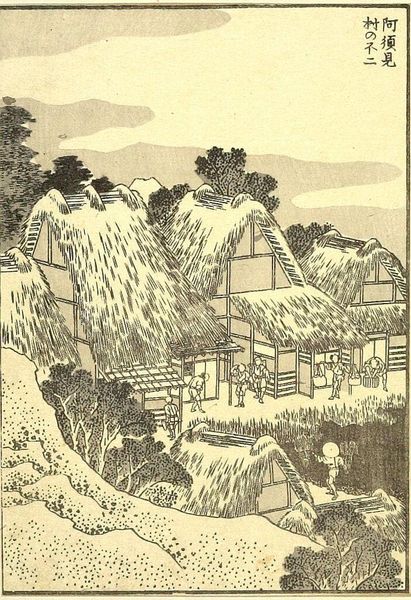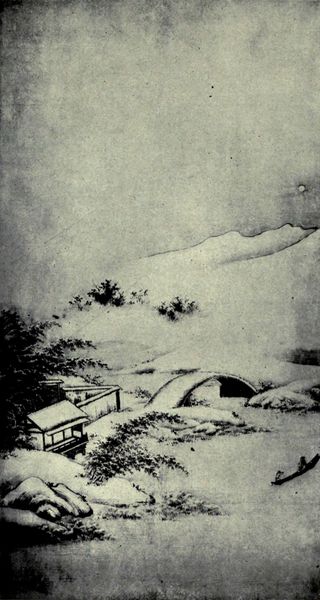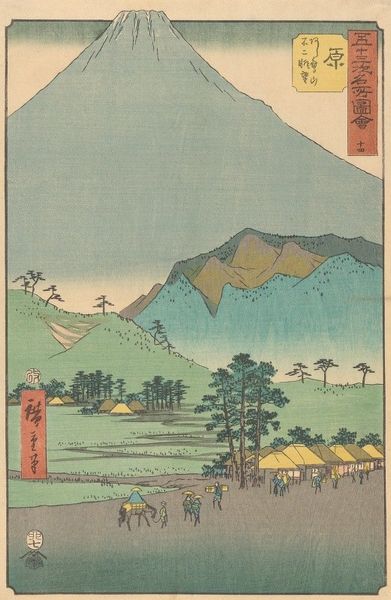
Fuji under the Moon (Gekka no Fuji): Half of detatched page from One Hundred Views of Mount Fuji (Fugaku hyakkei) Vol. 2 Possibly 1835 - 1836
0:00
0:00
Dimensions: Paper: H. 22.8 cm x W. 13.5 cm (9 x 5 5/16 in.) FOLDED
Copyright: CC0 1.0
Curator: Gazing at Hokusai's "Fuji under the Moon," or "Gekka no Fuji," I'm immediately struck by its stillness. There’s a hushed quality, like holding your breath in the face of something immense. Editor: It's interesting how Hokusai uses this traditional Japanese woodblock technique to convey stillness, yet the subject—Mount Fuji—is a symbol of permanence and patriarchal power within Japanese cultural identity. Curator: Right, there's a beautiful tension there. The moon, the wispy willow, the humble dwelling—they all whisper of impermanence, of life's fleeting beauty set against that majestic, unwavering presence. It feels so deeply human. Editor: And what does that human experience mean in the context of Hokusai’s time? Japan was at a crossroads, grappling with internal power struggles and external pressures from the West. Fuji becomes a symbol of national identity, both defiant and vulnerable. Curator: I see what you mean. It's an assertion of cultural pride but also a recognition of fragility. Makes you wonder what Hokusai was really trying to express beyond the surface beauty. Editor: Exactly. And how do we, as viewers from vastly different backgrounds, interpret and relate to these layers of meaning? Curator: Food for thought indeed. This image is so much more than just a pretty picture, then. Editor: It becomes a point of departure, a conversation between the past and the present.
Comments
No comments
Be the first to comment and join the conversation on the ultimate creative platform.



